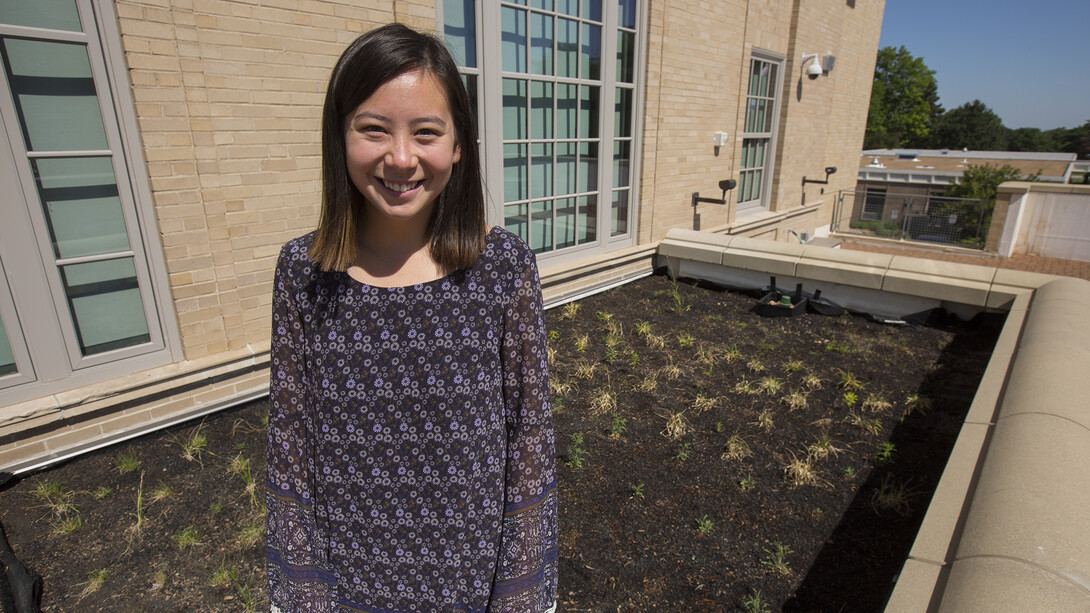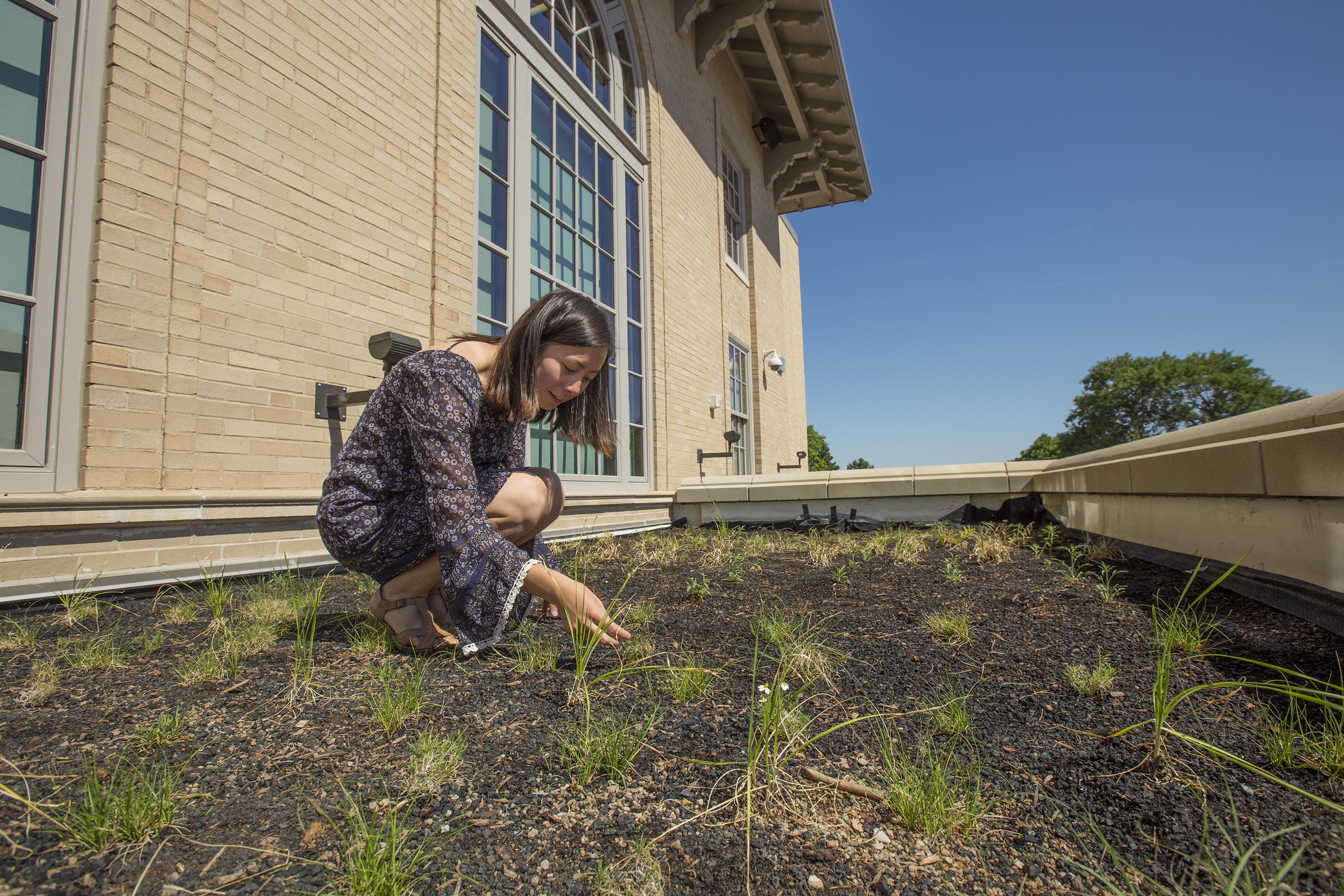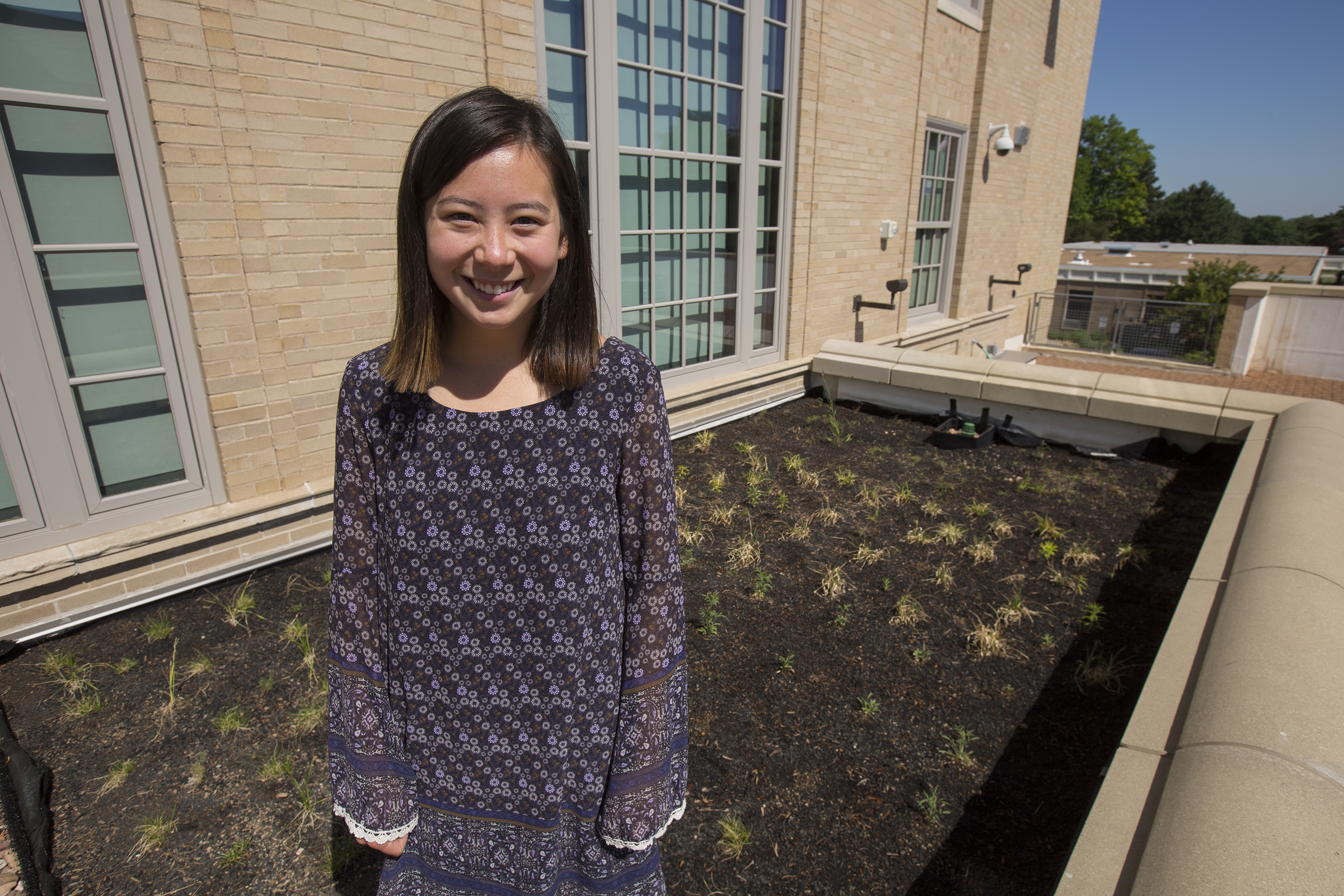
A student-powered fund created to expand sustainability programming at the University of Nebraska-Lincoln has set down its first roots.
Through a project led by Kylie Tucker, a junior fisheries and wildlife major, a prototype green roof has been established on a balcony area at the Rec and Wellness Center on East Campus. Project funding was provided through a $2,500 Association of Students of the University of Nebraska Green Fund grant.
The fund, which was approved by a student vote in 2015 and launched in spring 2016, collects a $1 student fee each semester to support student-led sustainability projects at the university.
Tucker learned about the fund through a presentation by Prabs Shrestha, the university’s sustainability coordinator.
“I’m the type of student who wants to be outdoors getting exposure to all kinds of green spaces,” Tucker said. “When Prabs came to class to talk about the Green Fund, I thought it was an incredible opportunity to do a micro-project that would expand sustainability on campus and, possibly, inspire other students to do the same.”

Consulting with Richard Sutton, an agronomy and horticulture/landscape architecture professor who led the environmental sciences course Shrestha visited, Tucker and two other students — Colleen Ocken, a junior biological systems engineering major, and Julia Cambridge, a sophomore horticulture major — opted to pursue a green roof project.
Sutton, whose research is focused on developing less expensive and more reliable methods to grow native prairie grasses and wildflowers in green roof applications, helped focus the project by suggesting the balcony area on the East Campus recreation building.
“The space was perfect because it was designed for some sort of planter or green roof application,” Tucker said. “Our project was also a good fit because the Rec and Wellness Center is an auxiliary of the university and student funding already goes toward the facility.”
Cambridge and Ocken helped in the design phase of the project.
The team opted to integrate native grasses and wildflowers into the space. They also used a specialized layering system that facilitates drainage to protect the balcony roof from potential water damage. The plants are growing in a substrate material that includes biochar, heat expanded shale and clay material that takes the place of soil.
“Biochar is ideal for green roof applications because it is considerably lighter than and retains water better than traditional soil,” Tucker said.
Tucker was the project’s leader, helping shepherd it through approvals by student government and university officials. She also helped guide horticulture students through the final installation at the end of the spring 2017 semester.
“We met every Friday for a few hours, hauling materials over here and up the stairs in buckets,” she said. “It was a lot of manual labor, but it was definitely worth it.”

The project will be completed this summer, with the addition of educational signage, a requirement of the Green Fund grant award. Campus Recreation will oversee watering of the green roof space.
“Now I have experience in how this sort of project works, from working closely with a professor and other students to all the details that needed to be included to get final approvals,” Tucker said. “I can’t wait to take the lessons learned in this project and apply them in the future.”
She also said she hopes the project provides inspiration to students, leading to more Green Fund sustainability efforts.
“Our green roof is unique because it’s in an area that is accessible to the public,” Tucker said. “This is one of the first Green Fund projects and I hope it helps students realize the potential we have to positively impact the campus environment through a series of small sustainability projects.”
The university also offers green roof designs in various teaching areas, including a shed in the Keim Hall courtyard, the Prem S. Paul Research Center at Whittier School and the Backyard Farmer garden on East Campus. Sutton has helped establish green roof applications that utilize native grasses and wildflowers across Lincoln, including the Larson Building, Arbor Day Foundation and the Pioneers Park Nature Center.
For more information on the Green Fund, click here.









